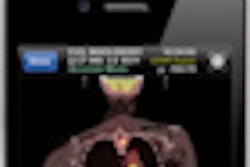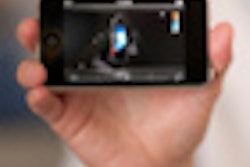Tuesday, November 29 | 9:30 a.m.-9:40 a.m. | MSVR31-06 | Room N228
A Spanish team has found that Apple's iPad 2 and iPhone 4 are just as good as commercial PACS monitors for diagnosing acute stroke on CT axial images.While the iPad 2 and iPhone 4 offer high-resolution screens, a reliable imaging interface via OsiriX HD, and high-speed wireless Internet connections, the research team wanted to determine if their image quality would be good enough to provide portable, precise, and instant diagnosis by an on-call specialist, said presenter Dr. Fernando García, PhD, of Puerta de Hierro University Hospital in Madrid.
The researchers selected 149 patients who underwent an urgent head CT scan to rule out acute cerebral infarction. Of these, 74 were confirmed as acute stroke cases on MRI and 75 were negative (and confirmed on follow-up/MRI).
A neuroradiologist provided an initial diagnosis on a PACS workstation. Next, two general radiologists read the studies on a 32-GB iPad 2 and a 32-GB iPhone 4 using version 2.0 of the OsiriX HD iPad/iPhone app. One radiologist read the studies first on the iPad, then again on the iPhone three days later to reduce recall bias. The second radiologist used the iPhone first, followed by the iPad three days later.
"Surprisingly, our results suggest that both iPad 2 and iPhone 4 offer the same sensitivity and specificity as commercial PACS monitors when diagnosing acute stroke on CT axial images, despite the small size and poorer specifications of the device's screen [when compared with the hospital's LCDs], slightly slower imaging loading time, and lack of tridimensional reconstructions," García said.




















